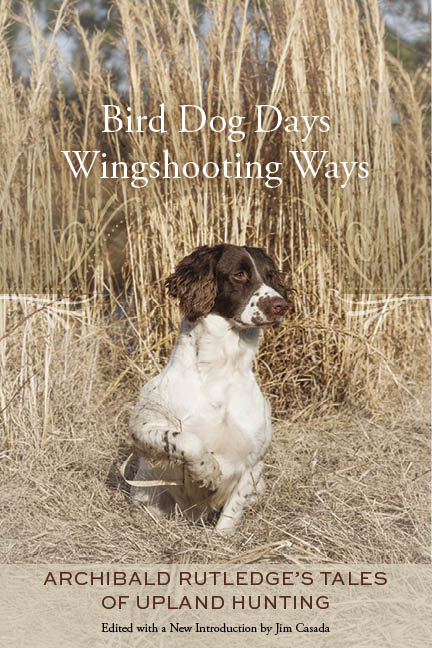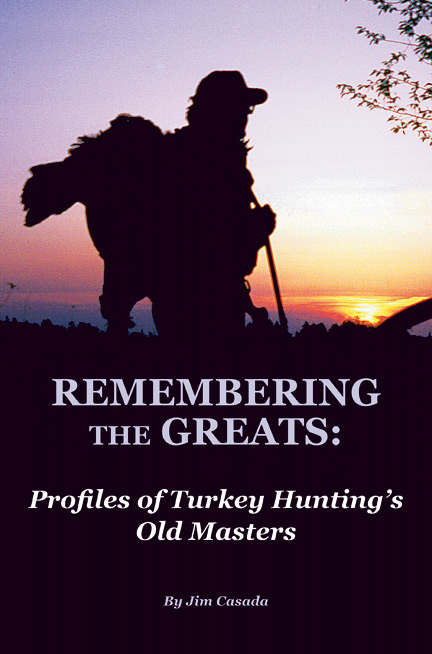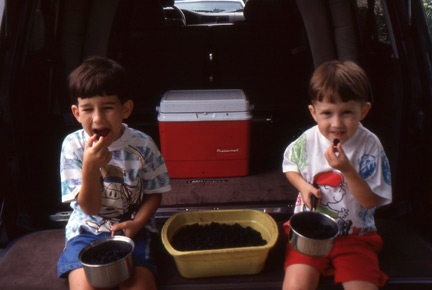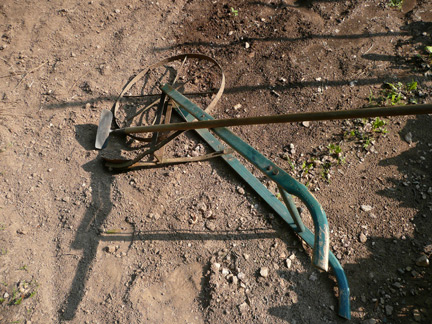June 2016 Newsletter
Click here to view this newsletter in a .pdf with a white background for easy printing.
Juneís Enduring Joys Were I asked to look back on the month of June through my life and say what aspects of it have been most durable or meaningful to me, I think there would be three or four that really stood out. They would include picking blackberries, gardening, various types of fishing, and camping in connection with trout fishing. I thought it might be fun to reminisce a bit about some of these enduring joys.
Picking blackberries isnít for everyone. Itís hot, sweaty work that can have unwelcome side ďbenefitsĒ such as chigger bites, scratches aplenty, the rare encounter with angry wasps, and possibly even an unwelcome crossing of paths with a rattlesnake or copperhead. Yet those things have never for a moment deterred me, because the benefits of a good pickiní outing are of such culinary delight that minor irritants such as hands stained a vivid purple or honorable temporary war wounds in the form of scratches or a few briars in oneís fingers are all but meaningless. Sitting down to a big bowl of blackberry cobbler is just as fine a moment as being invited to a five-star restaurant, at least in my opinion, and a cathead biscuit soaked in butter and slathered with a big dollop of blackberry jelly can bring sunshine to the greyest and gloomiest of winter days. Grubbiní in the Garden One of the most satisfying moments of my adult life came several decades ago when a local woman widely known as Ďthe plant lady,í thanks to the fact that she raised a wide variety of plants for sale, commented on me to another customer. That customer recognized me as a college professor and said something to that effect. The plant lady replied to the effect "heís not a professor; heís just an old dirt dauber." I took it as a great compliment. Wielding a hoe, getting your hands so dirt-encrusted from pulling weeds that no amount of scrubbing will get them completely clean, or laboring up one row and down another hour after hour isnít for everyone. Yet Iíve always loved working in a garden. It provides closeness to the earth, gives you a sense of self-worth and self-satisfaction when you eat something youíve nurtured, and is a great escape from the pressures of everyday life. Just this morning, for example, I was tying up some tomatoes and chopping down some weeds before it got too hot.
Speaking of weeds, as is ever the case in my garden they flourish like kudzu in the heat of summer, this morningís work involved dealing with a fair amount of red-rooted pig weed (purslane). The plant is quite edible in salads and as the colloquial name suggests, hogs absolutely love it. Never do I chop a pig weed plant down, or maybe enjoy an impromptu garden salad by eating a few leaves, that I donít once again think of Grandpa Joe. He raised hogs and we gathered pigweed for them times without number. Those were good times, no, change that to great times, and occasionally when we were through work there was a big cannonball watermelon sitting in an ice-laden wash tub awaiting our attention. When Grandpa Joe touched it with the point of a kitchen knife he had made from a saw blade it would split wide open. The luscious red flesh would be dotted with seeds for spitting and have a taste that has in no small degree been lost with the pantywaist poseurs known as ďseedlessĒ watermelons that todayís stores offer. They are quite decent eating but a far cry from a cannonball, Georgia Rattlesnake, or a Charleston Grey melon. Fishiní Fun June in my youth meant freedom in so many ways. Sure there were chores to be performed and daily expectations both at home and in connection with various jobs I held throughout my teens, but there wasnít any homework, no upcoming tests, or none of the drudgery associated with going to school five days a week. Mind you, I loved school but by the time June rolled around I was more than ready for a break. One of the most meaningful aspects of summer freedom focused on fishing. My fishing took two distinct formsófly fishing for trout and river fishing for various species, although catfish and bream dominated my catches. Since I wrote about trout fishing (and camping) last month, I thought Iíd devote some space this time around to fishing in warmer, slower waters. I was lucky enough to grow up under the sort of unofficial mentorship of a catfishing wizard by the name of Al Dorsey, and he knew every trick of the catfish trade you could think of. He caught them with trot lines, limb lines, throw lines, jug fishing, on cane poles, and with rod and reel. He had a special contraption in the branch next to his house where he kept the catfish he caught to clean them up much like folks used to cage Ďpossums and ďfeed Ďem cleanĒ before eating them. The Tuckasegee River where old Al fished was badly polluted, so this made good sense. He sold catfish on a regular basis, and by the time June rolled around he spent every day, from fairly early in the morning right into darkness watching set poles, running lines, or otherwise dealing with catfish. Al was an absolute stranger to soap and water, and anytime you got downwind of him your nostrils were assaulted in a most distinctive and distressing fashion. He never wore socks in the summer, just overalls, a long-sleeved shirt, and brogans. Whenever his pants were hiked up high enough to see his ankles, a solid crusting of dirt was readily visible. Momma often said something to the effect of ďYou donít need to be fooling around with that old man,Ē but they never really offered an explanation other than that he was dirty. It wasnít until many years later, when I was well into adulthood, that I discovered on my own that Al Dorsey had been convicted of second degree murder and spent a number of years in the state penitentiary. I plan to tell the story of his life in my book on ďProfiles in Mountain Character,Ē so Iíll save most of the details for then. Suffice it to say for present purposes that he was totally harmless when I knew him, long after he had been released from prison, and he was quite good to a whole bunch of juvenile river rats in training. Iíve never been around anyone who knew more about catching catfish, and it wouldn't be much of an overstatement to apply a line from the wonderful song by Allison Krauss, ďCatfish John,Ē to old Al. In the song she talks about a fellow somewhat similar to Dorsey, albeit without the murder conviction figuring in the picture, and part of the lyrics state ďI was proud to be his friend.Ē Rest assured I was proud to call Al Dorsey friend, and Iíd like to think that he looked on me as a youthful friend in return. Recipes SALT AND PEPPER CATFISH
2 pounds catfish fillets cut into one-inch strips Mix the cornmeal with salt and black pepper and toss the catfish strips, a fryer full at a time, in a plastic or paper bag. Heat oil to 375 degrees in a deep fryer. Cook the nuggets, a dozen or so at a time, until they are golden brown and begin to float to the top. Drain atop paper towels. This is a recipe that makes 10 to 12 servings, but it can be halved or quartered. EASY PEASY CATFISH FILLETS
1 cup lemon juice Pour the lemon juice into a bowl and dip the fillets into the juice before sprinkling with seasoning. Cook on a grill pan or in an oiled skillet from 10 minutes per inch of thickness or until the fish flakes readily. Makes 4 hearty servings. MEDITERRANEAN-STYLE CATFISH
4 catfish fillets Sprinkle the fish fillets evenly with salt and pepper. Heat the oil in a large non-stick skillet over medium heat. Add the catfish fillets and cook for five minutes. Turn the fish and add the garlic and onion. Cook for an additional five minutes. Add the vinegar, lemon juice, artichoke hearts, olives, and tomatoes. Cook for three to four minutes to make a chunky sauce. Place the fish on a platter and spoon the sauce over top. Sprinkle with the feta cheese. Serve with crusty bread and couscous. Makes four hearty servings. SPICY CATFISH NUGGETS
1 bottle buffalo-style hot wing sauce or other hot sauce such as Texas
Pete or Tabasco Marinate the catfish nuggets in hot sauce for 30-45 minutes. Mix the cornmeal, salt, and black pepper, and then shake the nuggets, using a Ziploc or paper bag, until coated. Deep fry a few nuggets at a time in oil that has been pre-heated to 375 degrees. The nuggets will be golden brown and begin to float to the top when done. Drain atop paper towels and keep warm until all nuggets have been cooked. Serve with coleslaw and hushpuppies. ANNA LOUíS BLACKBERRY COBBLER Iíve offered this recipe before on multiple occasions, but it is so easy, so fail-safe, and so versatile (use about any kind of berries such as blueberries, raspberries, strawberries, boysenberries, dewberries, or huckleberries, along with cherries, apples, or peaches) that itís well worth repeating. Anna Lou was my mother, and her two favorite ways of making this cobbler were with blackberries or apples. Thatís probably because as a boy I was a prolific picker of blackberries (getting a quarter a gallon for all I could pick) and because we had a tiny apple orchard to provide plenty of makinís.
1 cup all-purpose flour Combine flour, sugar, baking powder, and milk and stir with a wire whisk until smooth. Add melted butter and blend. Pour batter in a 13 x 9 x 2 inch baking pan. Pour berries evenly over batter. Do not stir. Bake at 350 degrees for 30 to 40 minutes or until golden brown.
Thank you for subscribing to the
Jim Casada Outdoors
newsletter. |
||||
|
Send mail to
webmaster@jimcasadaoutdoors.com with
questions or comments about this Web site. |

 Thereís
more on daily activities below, but mention of a few developments on the
writing front are merited. My new and expanded edition of Bird Dog
Days, Wingshooting Ways, is on track, as scheduled, to be out in
July. The cover, which I find quite attractive, is shown here, and Iím going to go
ahead and start taking advance orders. The hardbound book will be $30 +
$5 postage, and Iíll ship as soon as they arrive.
Thereís
more on daily activities below, but mention of a few developments on the
writing front are merited. My new and expanded edition of Bird Dog
Days, Wingshooting Ways, is on track, as scheduled, to be out in
July. The cover, which I find quite attractive, is shown here, and Iím going to go
ahead and start taking advance orders. The hardbound book will be $30 +
$5 postage, and Iíll ship as soon as they arrive. 
 Pickiní
Pickiní Two
of the tools I use most while grubbiní in the garden (and ďgrubbiníĒ was
a word my Grandpa Joe loved to use in this context) give me a sense of
comfort and linkage to the past that are mighty meaningful in my little
world. They are an old-time push plow for laying off rows or
cultivating, depending on which attachment you use, along with a hoe
with the broadest blade Iíve ever seen. I just put a measuring tape on
the hoe blade and it is a full eight inches wideóroughly three inches
wider than most hoes. On the other hand, it only extends out about two
and three-quarters inches from the hosel connecting the blade to the
handle. Thatís thanks to what is likely at least a century of loving use
gradually wearing away at the metal. Both implements belonged to Grandpa
Joe, and all I have to do is have one of them in hand to harken back to
all those countless hours, in the garden and elsewhere, we spent
together. Along with a rocking chair that was his and a very few
photographs, itís all I have in the way of tangible ties to him, but in
my view Iím blessed. Every time I hoe out a row of corn, prepare a row
for planting seeds, or chop away at some intrusive weeds, Iím reminded
of him.
Two
of the tools I use most while grubbiní in the garden (and ďgrubbiníĒ was
a word my Grandpa Joe loved to use in this context) give me a sense of
comfort and linkage to the past that are mighty meaningful in my little
world. They are an old-time push plow for laying off rows or
cultivating, depending on which attachment you use, along with a hoe
with the broadest blade Iíve ever seen. I just put a measuring tape on
the hoe blade and it is a full eight inches wideóroughly three inches
wider than most hoes. On the other hand, it only extends out about two
and three-quarters inches from the hosel connecting the blade to the
handle. Thatís thanks to what is likely at least a century of loving use
gradually wearing away at the metal. Both implements belonged to Grandpa
Joe, and all I have to do is have one of them in hand to harken back to
all those countless hours, in the garden and elsewhere, we spent
together. Along with a rocking chair that was his and a very few
photographs, itís all I have in the way of tangible ties to him, but in
my view Iím blessed. Every time I hoe out a row of corn, prepare a row
for planting seeds, or chop away at some intrusive weeds, Iím reminded
of him.